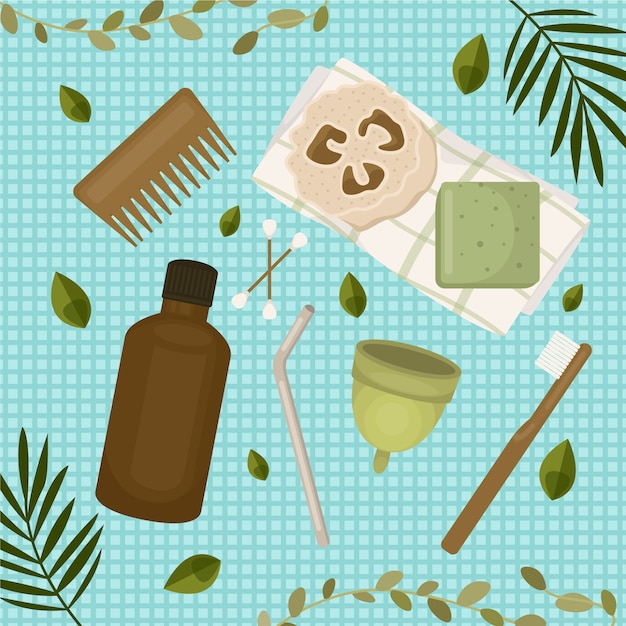
Making your own facial cleansing stick is easier than it seems. At its core, a cleansing stick is simply a foaming facial cleanser shaped into a solid stick that twists up like a balm. While it might look like a soap bar, it’s actually made from solidified cleansing oils with surfactants, which help it wash away easily. Unlike traditional cleansing balms, these sticks often create foam, though foam isn’t a must—it just helps with more effective cleaning.
Cleansing sticks have been a big part of Asian skincare for years, praised for being gentle on the skin. They’re made with low-pH formulas, which help maintain the skin’s moisture barrier, unlike the harsher, high-pH cleansers that can strip the skin. They contain a mix of oils, acids, and mild surfactants, making them particularly great at removing waterproof makeup like eyeliner, mascara, and lipstick. On top of that, cleansing sticks are super convenient for travel. Toss one in your gym bag or luggage, and you can cleanse your face anywhere without the fuss of multiple products.
In the ever-expanding world of skincare, cleansing sticks have carved out their niche. While there are already countless cleansers in the market—liquid oils, balms, creamy emulsions, and even double-cleansing systems—cleansing sticks offer an innovative, portable solution. They combine cleansing power with convenience, effectively tackling everything from makeup and sunscreen to oil-based grime in a quick, mess-free way.
One of the benefits of cleansing sticks is how easy they make skincare routines, especially for people on the go. These sticks come in twist-up tubes, much like lip balms, making them portable, hygienic, and mess-free. To use one, just wet your face, swipe the stick directly onto your skin, lather up with your fingertips, and rinse it off. It’s quick and perfect for busy lifestyles.
### How to Make an Apricot Oil Facial Cleansing Stick
Want to create your own cleansing stick at home? Here’s a simple formula to get you started.
#### Ingredients:
– **Stage 1:** 10% distilled water, 22.8% glycerin, 30% sodium cocoyl isethionate, 5% cocamidopropyl betaine, 0.1% lactic acid.
– **Stage 2:** 10% apricot oil, 6.8% coconut oil, 5% lavender oil macerate, 3% sodium stearoyl lactylate, 5% rice wax, 0.5% tocopherol (Vitamin E).
– **Stage 3:** 0.8% preservative, 1.0% red mandarin essential oil.
#### Method:
1. Heat the Stage 1 and Stage 2 ingredients separately to 75–80°C.
2. Slowly mix Stage 2 (oils) into Stage 1 (water-based ingredients) while stirring gently to avoid creating foam.
3. Once the mixture cools to under 70°C, add Stage 3 (preservatives and essential oil).
4. Pour the blend into a stick container while it’s still warm and allow it to set overnight.
For safety, always wear a mask when using powdered surfactants like SCI to avoid inhalation. Don’t worry if there are small holes in your finished product—that’s common when blending by hand.
### Benefits of Cleansing Sticks
Cleansing sticks are a fantastic hybrid of liquid cleansers and solid soap bars without the drawbacks of traditional soap. Unlike soap, cleansing sticks don’t require curing time and aren’t alkaline, which makes them gentler on sensitive or aging skin, as well as on baby skin. They maintain a skin-friendly pH that suits a wide range of users.
These sticks are also travel-friendly and practical, making facial cleansing on the go easier than ever. Popularized in Asia, they’ve quickly gained fans worldwide and are especially loved for their eco-friendly formulations.
### Customizing Your Cleansing Stick
You can tweak your cleansing stick formula to suit your skin type or desired application. For example, you can adjust the wax-to-oil ratio to prevent the stick from melting in the heat or feeling too waxy on the skin. Adding or skipping preservatives depends on whether you aim for an entirely natural formula, though pH adjustments become even more important in preservative-free products.
Here’s another versatile formula you can try:
#### Ingredients:
– **Phase 1 (Water-Based):** 40% distilled water, 4% glycerin, 25% sodium cocoyl isethionate, and 5% plant-based pentylene glycol.
– **Phase 2 (Oils and Waxes):** 9% myrica fruit wax, 5% rice bran wax, and 5% babassu oil.
– **Phase 3 (Active Additives):** 3% St. John’s Wort oil, 2% peach kernel oil, and 0.5% tocopherol, with optional extracts like rosemary and activated charcoal.
– **Phase 4 (Surfactants and Essential Oils):** 6% coco-glucoside, 2% sucrose cocoate, and essential oils like lavender or bergamot.
– **Phase 5:** Lactic acid (adjust to achieve a pH of around 5–6).
#### Procedure:
1. Separate ingredients into phases and heat the first two phases to 80–85°C.
2. Blend Phase 2 into Phase 1 slowly while stirring to avoid foam, then add the remaining phases, one at a time.
3. Adjust the pH by adding lactic acid as needed.
4. Pour the final mixture into stick containers and refrigerate for at least 12 hours before use.
### Benefits of Regular Facial Cleansing
Cleansing your skin daily is key to maintaining a healthy, radiant complexion. It helps remove dirt, oil, and bacteria that build up throughout the day, preventing clogged pores and acne. Cleansing also preps the skin for better absorption of moisturizers and other products, so they work more effectively.
When done correctly, cleansing maintains the skin’s hydration, balances its pH levels, and keeps it looking fresh and youthful. Skipping cleansing can lead to issues like dryness, irritation, oiliness, or breakouts. The right cleansing product, tailored to your skin type, can make all the difference.
### Choosing the Best Cleanser for You
– Dry skin? Look for cream-based cleansers without heavy alcohols.
– Oily skin? Opt for a foaming cleanser with a lower pH.
– Sensitive skin? Stick to gentle, fragrance-free options.
– Wear heavy makeup? Choose a cleanser with strong makeup-removing properties.
And if you want full control over the ingredients, try making your own facial cleansing stick! It’s a fun, customizable way to elevate your skincare routine.